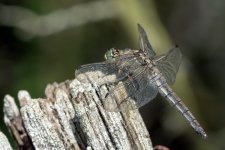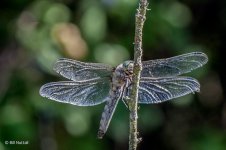BillN
Well-known member
I get more and more confused IDing Dragonflies
Looks like an Old, female Darter to me, maybe a Ruddy ……but Green eyes and I know that there is a very small white tip, but it does not look like the White-tailed Skimmers that I have seen …….. it seems to have a "white face" but that must just be how it is
seen SW France today
sorry about the quality of the 2nd image it did not stay around very long
experts will be along, thanks
Looks like an Old, female Darter to me, maybe a Ruddy ……but Green eyes and I know that there is a very small white tip, but it does not look like the White-tailed Skimmers that I have seen …….. it seems to have a "white face" but that must just be how it is
seen SW France today
sorry about the quality of the 2nd image it did not stay around very long
experts will be along, thanks
Attachments
Last edited:





